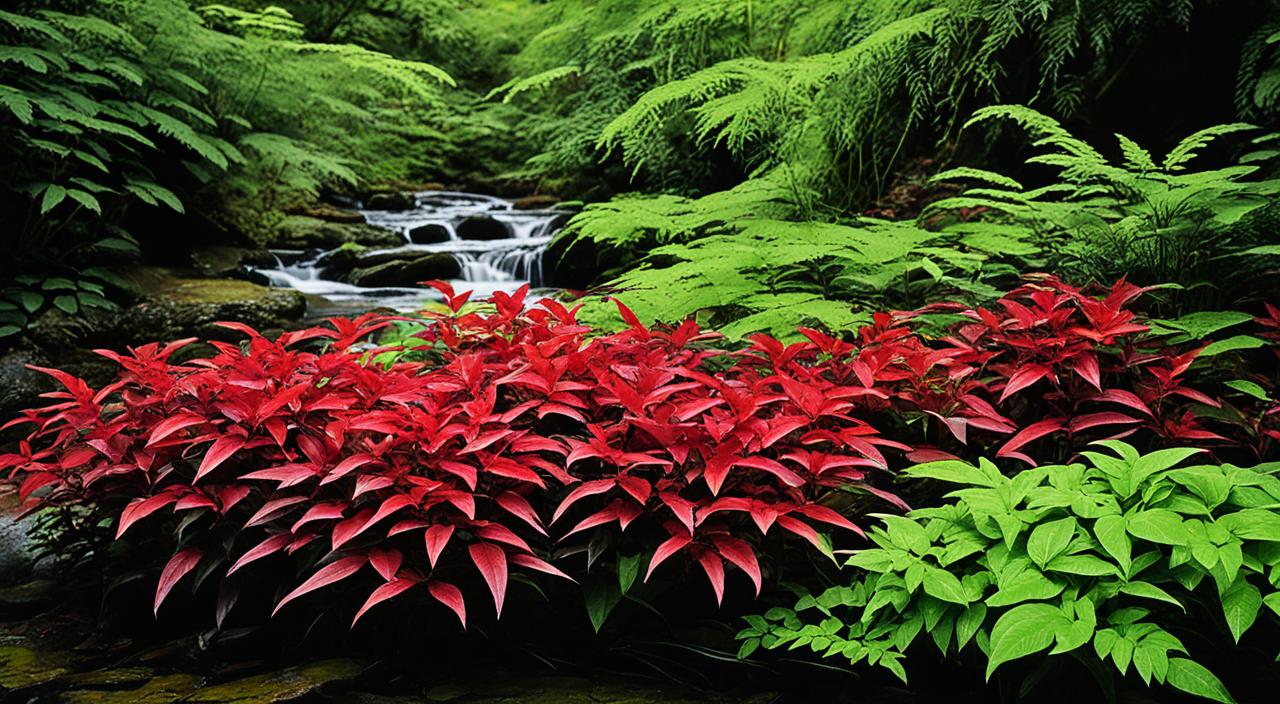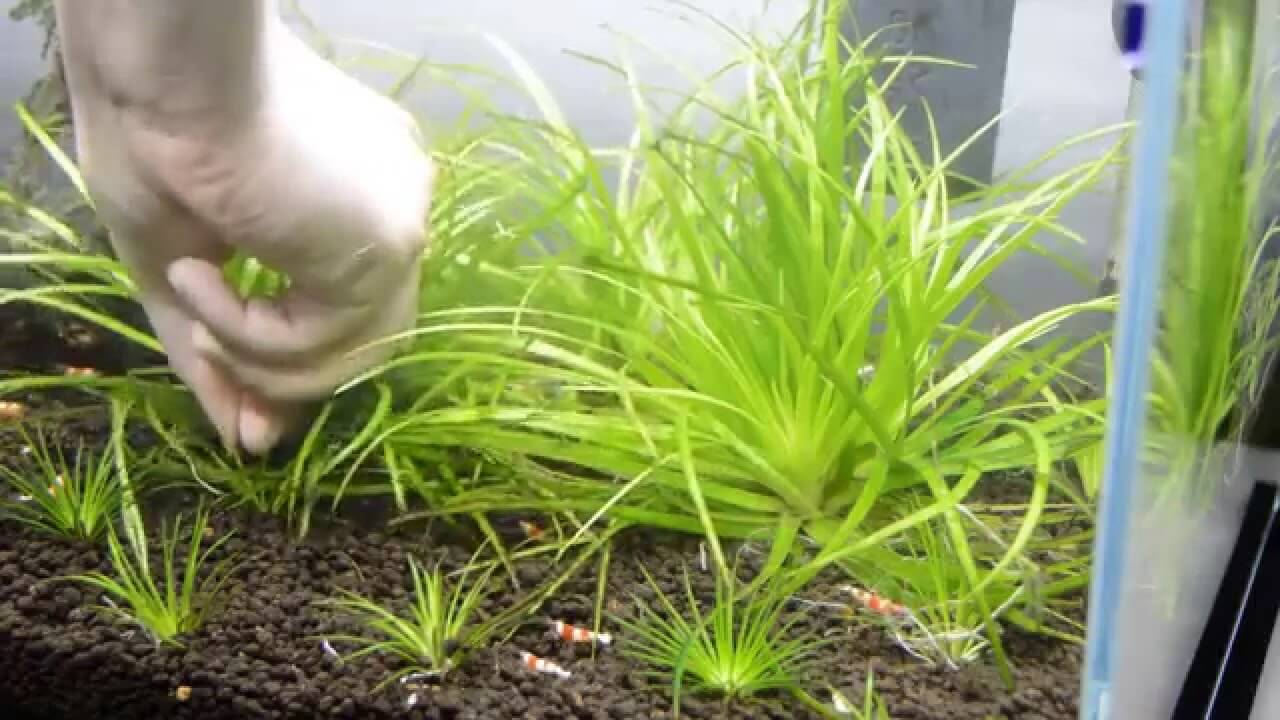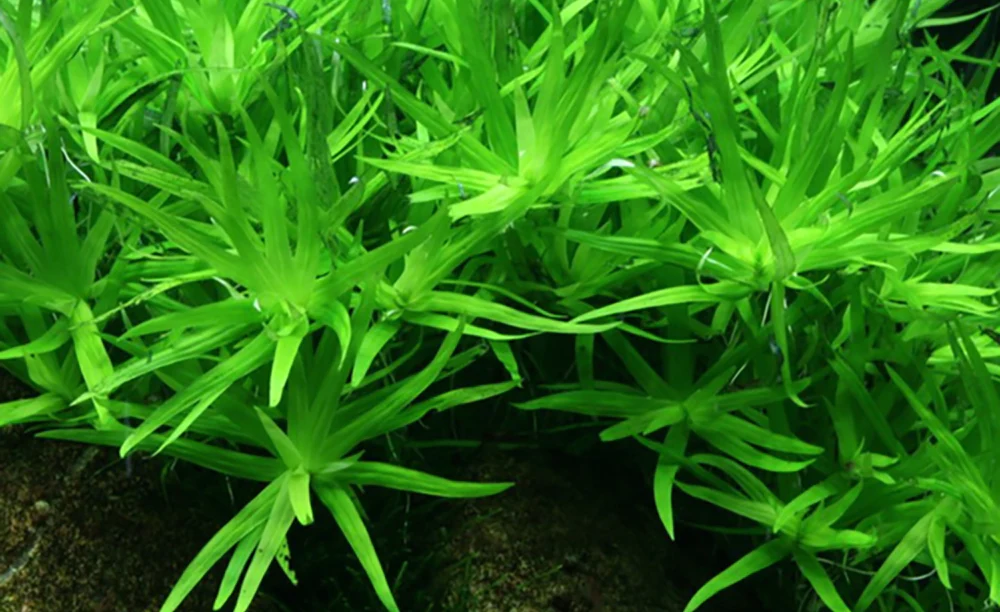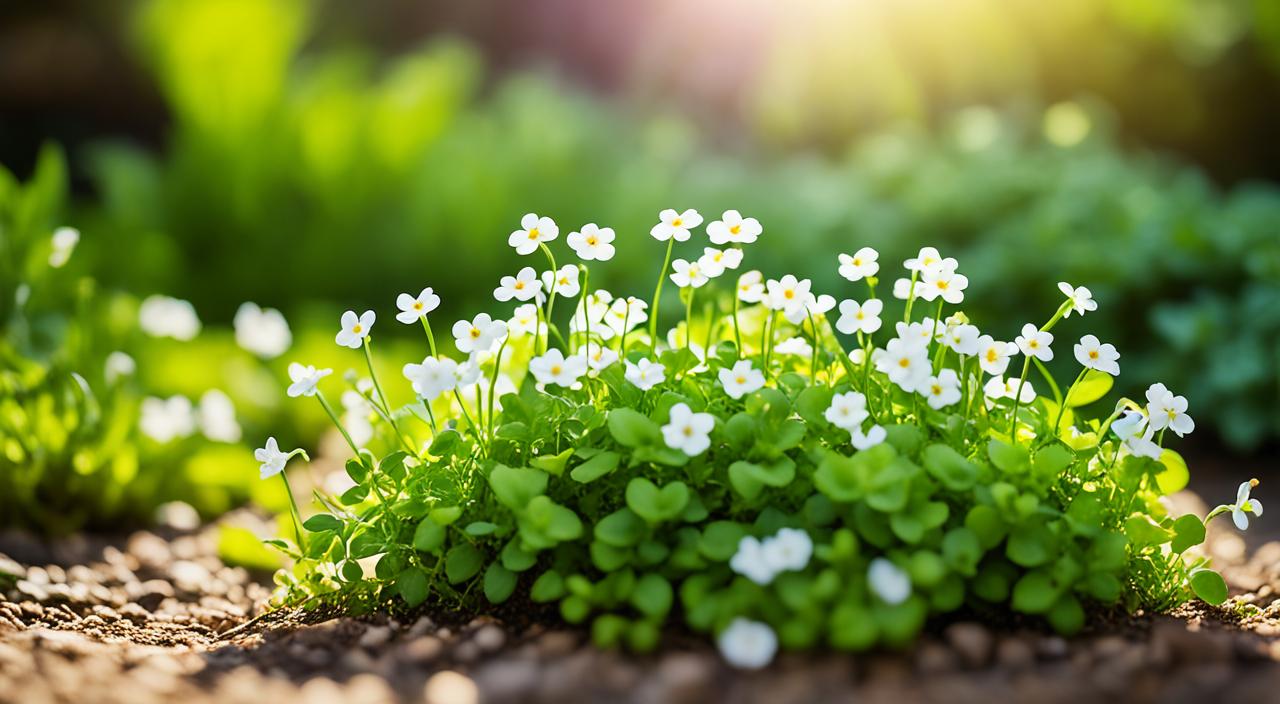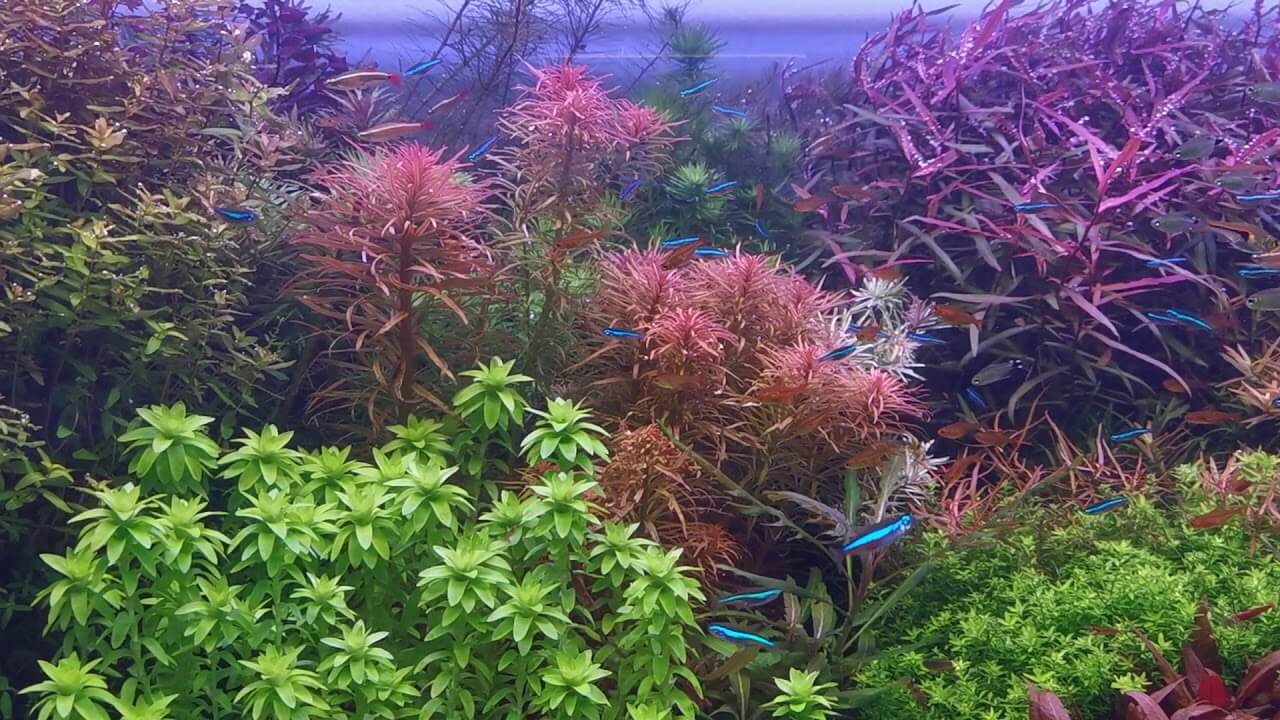Welcome to my comprehensive guide on Hygrophila rubins, Ruby Ludwigia. If you want to add a vibrant splash of red to your aquarium, this stunning aquatic plant is a perfect choice. In this article, I will provide all the information you need to care for and maintain Hygrophila rubins successfully in your freshwater aquascape.
Key Takeaways:
- Hygrophila rubins, or Ruby Ludwigia, is a striking aquatic plant with vibrant red foliage.
- It belongs to the Acanthaceae family and is native to India.
- Hygrophila rubins require specific care to thrive in an aquarium, including high lighting, CO2 injection, and nutrient supplementation.
- This plant adds visual appeal and is an excellent focal point in any freshwater aquascape.
- Proper placement, lighting, tank mates, feeding, and maintenance are crucial for the plant’s health and vibrant colouration.
Brief Overview Of Hygrophila Rubins
Hygrophila rubins is a popular aquatic plant among aquarists due to its stunning red foliage. It is a versatile plant that can be grown submerged and emersed, making it suitable for various aquascaping styles.
Hygrophila Rubin Information Table:
| Row Names | Descriptions |
|---|---|
| 1. Scientific Name: | Hygrophila ‘Rubin’ |
| 2. Common Names: | Hygrophila Rubin, Red Hygrophila |
| 3. Origin: | Root tabs and liquid fertilizers are recommended |
| 4. Height: | Up to 50 cm (20 inches) |
| 5. Growth Rate: | Medium to Fast |
| 6. Colour: | Cultivar, a hybrid of Hygrophila species |
| 7. Aquarium Placement: | Midground to Background |
| 8. Water Type: | Freshwater |
| 9. pH: | 5.5 – 8 |
| 10. Care Level: | Moderate |
| 11. Light Requirements: | High light intensity preferred; 50-70 PAR; 6500K to 7500K for optimal coloration |
| 12. CO2 Requirements: | Reddish leaves with a more vibrant colour under strong light |
| 13. Temperature: | 22°C – 28°C (72°F – 82°F) |
| 14. Flow Rate: | Moderate to High |
| 15. Propagation: | Cuttings from the main stem or lateral shoots |
| 16. Feed Type: | Root tabs and liquid fertilizers recommended |
Expanded Light Requirements:
For Hygrophila ‘Rubin’, achieving the best colouration and growth requires attention to lighting conditions. This plant thrives under high light intensity, ideally within 50-70 PAR (Photosynthetically Active Radiation). This level of light encourages the leaves to develop their characteristic reddish hue. The optimal colour temperature for promoting vibrant growth and colouration in Hygrophila ‘Rubin’ is between 6500K and 7500K. This spectrum simulates the bright, direct light of the tropical midday sun, which supports photosynthesis and pigment development. Adequate lighting enhances the plant’s colour and promotes overall health and vigour.
This plant requires high lighting, CO2 supplementation, and regular fertilization to maintain its vibrant red colouration. Hygrophila rubins is known for its moderate growth rate and can be propagated by stem cuttings. It adds a striking visual appeal to any aquarium and is a favourite choice for creating eye-catching focal points.
Origins And Habitat
Hygrophila rubins is a captivating aquatic plant native to India. It thrives in the natural aquatic habitats of rivers, streams, and marshes found throughout the country. Adapted to submerged and emersed environments, Hygrophila rubins display its stunning foliage in areas with high lighting and abundant access to nutrients.
This beautiful plant in India has gained popularity in aquariums worldwide due to its easy cultivation and striking appearance. Its natural habitat provides valuable insights into recreating optimal conditions in a home aquarium.
Take a closer look at the natural habitat of Hygrophila rubins in the table below:
| Aquatic Habitat | Lighting | Nutrient Availability |
|---|---|---|
| Rivers | High | Ample |
| Streams | High | Ample |
| Marshes | High | Ample |
The table shows that Hygrophila rubins thrive in habitats with high lighting and sufficient nutrient availability. By replicating these conditions in your aquarium, you can ensure this stunning aquatic plant’s healthy growth and vibrant colouration.
Morphological Characteristics
The Hygrophila rubins is an aquatic plant known for its vibrant red leaves. Ranging in shades from deep maroon to bright crimson, these striking foliage add a captivating element to any aquarium. The plant has a moderate growth rate and can reach a height of 5-8 inches, making it an ideal choice for small and large aquariums.
The leaves of Hygrophila rubins are pinnatifid, meaning they have deep lobes with serrated edges, creating an intricate and visually appealing texture. This unique morphology adds depth and dimension to the plant’s overall appearance.
The Hygrophila rubins also form lateral shoots, allowing for easy propagation through stem cuttings. This will enable aquarists to expand their collection or share with fellow enthusiasts.
Proper lighting and nutrient supplementation are crucial for maintaining the intense red colouration of the leaves. Optimal lighting conditions ensure the colours remain vibrant while adequate nutrients support healthy growth and development.
Placement And Lighting
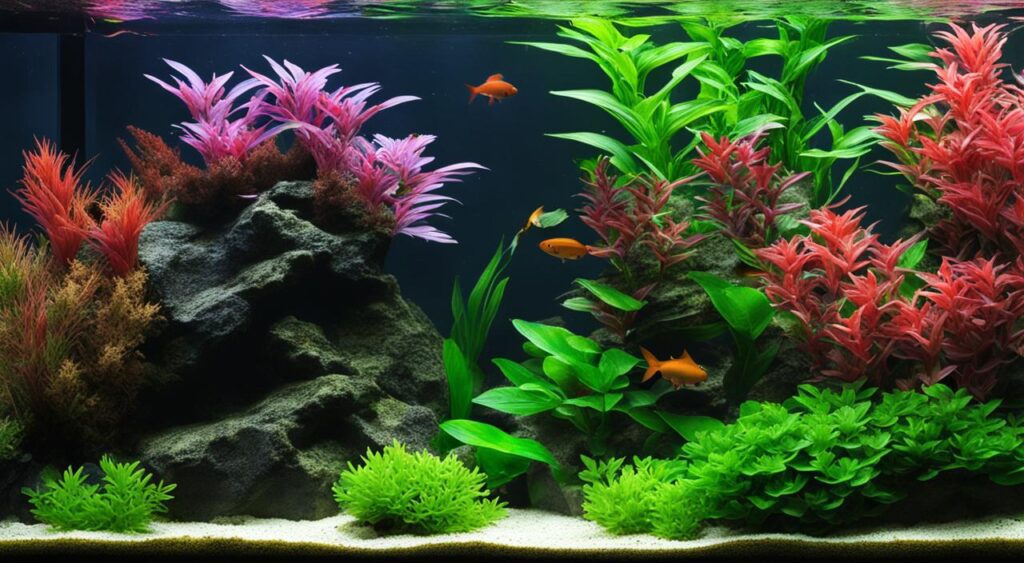
Proper placement and lighting are crucial for the successful growth and visual impact of Hygrophila rubins in your aquarium. To create a striking focal point, this vibrant red plant should be positioned in the midground or background of the tank.
When it comes to lighting, Hygrophila rubins thrives under high-intensity illumination. I recommend using LED or fluorescent lights with a colour temperature of approximately 6500K to achieve optimal growth and vibrant colouration.
It is crucial to provide a consistent lighting schedule of 8-10 hours daily to promote healthy growth and maintain the plant’s intense red hues. A well-lit environment ensures that Hygrophila rubins receive the light energy they need for photosynthesis and overall well-being in the aquarium.
What Are Good Tank Mates?
When considering tank mates for your Hygrophila rubins, choosing fish species that will coexist peacefully with this stunning aquatic plant is essential. Good tankmates for Hygrophila rubins include tetras, guppies, and rasboras. These peaceful community fish will add visual appeal to your aquarium and respect the delicate foliage of Hygrophila rubins.
Good Tank Mates
Here are some examples of fish species that make excellent tank mates for Hygrophila rubins:
- Tetras
- Guppies
- Rasboras
Fish Species To Avoid
While there are many suitable tank mates for Hygrophila rubins, it’s essential to avoid certain fish species that may harm or disturb the foliage:
- Aggressive fish: Fish that tend to be territorial or aggressive should be avoided to prevent damage to the delicate foliage of Hygrophila rubins.
- Herbivorous fish: Some herbivorous fish species may nibble on the plant, leading to its deterioration.
- Goldfish and cichlids: These fish are known to uproot plants or nibble on foliage, making them unsuitable tank mates for Hygrophila rubins.
Feeding (Fertilization)
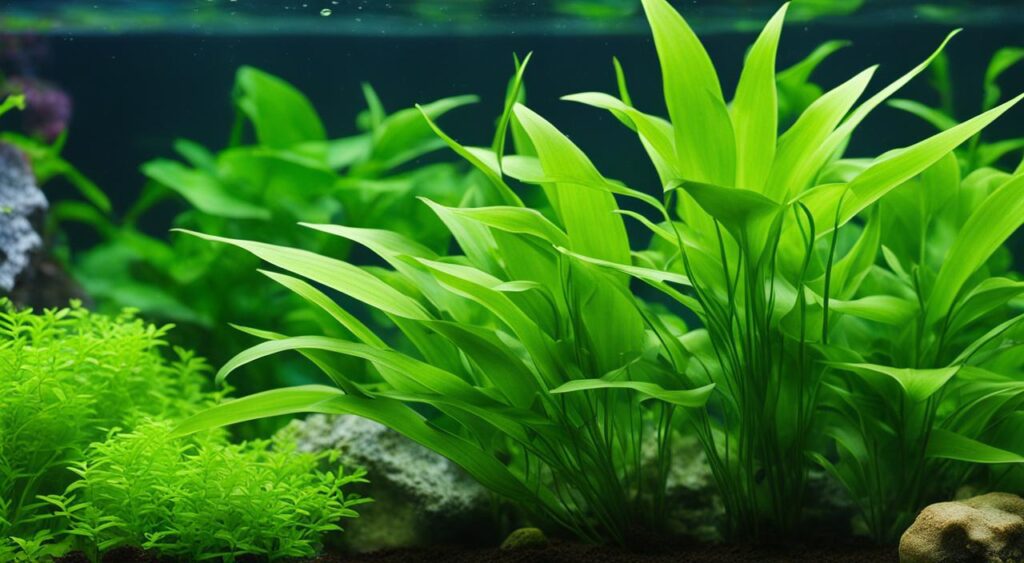
Hygrophila rubins, like any other aquatic plant, requires regular fertilization to provide the essential nutrients it needs for optimum growth and coloration. To ensure the plant’s health and vibrancy, it is recommended to use liquid fertilizers formulated specifically for aquatic plants.
When fertilizing Hygrophila rubins, following the manufacturer’s instructions regarding dosage and frequency is crucial. Each fertilizer product may have different guidelines, so reading and applying them accordingly is essential. Typically, weekly or bi-weekly fertilization meets the plant’s nutrient requirements.
Monitoring the plant’s growth is essential in determining whether the fertilization schedule needs adjustment. Observe the plant’s overall appearance, including the colour and size of the leaves. If the plant shows slow growth or pale leaves, it may indicate a need for additional or more frequent fertilization.
How Much And How Often To Feed
When feeding Hygrophila rubins, following the dosage instructions provided by the fertilizer manufacturer is recommended. These instructions will specify the amount of fertilizer to be used per gallon or litre of aquarium water.
Generally, 1-2 ml (or as instructed) of liquid fertilizer per 10 gallons (or as instructed) of aquarium water is a good starting point. This dosage can be adjusted based on the plant’s response and the requirements of other plants in the tank.
As for the feeding frequency, a weekly or bi-weekly schedule is usually sufficient. This ensures a steady supply of nutrients to support the plant’s growth and overall health.
Proper feeding and fertilization are essential for promoting healthy growth and vibrant colouration in Hygrophila rubins. By providing the necessary nutrients in the right quantities and frequencies, you can help the plant thrive and enhance the beauty of your aquarium.
| Fertilizer Type | Recommended Dosage | Frequency |
|---|---|---|
| Liquid Aquatic Plant Fertilizer | 1-2 ml per 10 gallons of water | Weekly or bi-weekly |
| Other Fertilizer Types | Follow manufacturer’s instructions | Follow the manufacturer’s instructions |
CO2 Injection
Hygrophila rubins, the vibrant red aquatic plant, can significantly benefit from CO2 supplementation in your aquarium. Carbon dioxide injection promotes enhanced growth and vibrant colouration, allowing you to showcase the full beauty of this stunning plant. There are several methods of CO2 injection that you can choose from, depending on your needs and budget.
Types of CO2 Injection
1. Pressurized CO2 systems: Pressurized CO2 systems are popular among aquarium enthusiasts. They involve using a pressurized canister of CO2 connected to a diffuser or atomizer, which releases the CO2 into the tank in a controlled manner. This method provides precise control over CO2 levels and delivers consistent results.
2. DIY CO2 setups: If you prefer a more budget-friendly option, you can use readily available materials to set up a DIY CO2 system. This involves creating a homemade CO2 generator using yeast, sugar, and water, which produces CO2 through natural fermentation. DIY CO2 setups are a cost-effective alternative but may require more frequent maintenance.
3. Liquid carbon supplements: Liquid carbon supplements, also known as liquid CO2, provide a convenient and hassle-free way to supplement your aquarium with CO2. These supplements typically contain carbon-rich organic compounds that mimic the effects of CO2 injection. While they may not be as effective as pressurized setups, they can still help promote plant growth and colouration.
When selecting the right CO2 injection method for your aquarium, consider factors such as the size of your tank, the specific needs of your plants, and your budget. Regardless of the method chosen, it is crucial to maintain stable CO2 levels to avoid fluctuations that can stress the plants and hinder their growth.
| Method | Pros | Cons |
|---|---|---|
| Pressurized CO2 systems | – Precise CO2 control – Consistent results | – Higher cost – Requires additional equipment |
| DIY CO2 setups | – Budget-friendly – Easy to set up | – Requires frequent maintenance – CO2 levels may fluctuate |
| Liquid carbon supplements | – Convenient and hassle-free – No additional equipment needed | – Less effective than pressurized setups – May not provide optimal CO2 levels |
Care
Proper care is essential for the optimal growth and health of Hygrophila rubins in a planted tank. This section will outline the key aspects of care, including planted tank parameters, water quality, filtration, and water flow.
Planted Tank Parameters
To ensure the healthy growth of Hygrophila rubins, it is essential to maintain specific parameters in your planted tank:
- pH: 6-7.5
- Temperature: 72-82°F (22-28°C)
- Hardness: 2-15° dKH (carbonate hardness), 0-30° dGH (general hardness)
Water Quality
Clean and stable water quality is crucial for the well-being of Hygrophila rubins. Regular water testing and maintenance of optimal parameters are recommended to ensure the plant’s growth and vitality. Monitor critical parameters such as pH, ammonia, nitrate, and phosphate levels and adjust as necessary to create a suitable plant development environment.
Filtration
A high-quality filtration system maintains water clarity and removes excess nutrients in a planted tank. Consider using a canister or hang-on-back filter equipped with biological and mechanical media. This combination will help regulate water quality and reduce the risk of nutrient imbalances that can negatively affect the health of Hygrophila rubins.
Flow
Moderate water flow is beneficial for distributing nutrients and preventing debris buildup around the Hygrophila rubins. Ensure sufficient water movement throughout the tank to support the plant’s growth. Combine the filtration system’s placement and the aquarium equipment’s positioning to achieve an optimal flow pattern.
| Tank Parameters | Ideal Range |
|---|---|
| pH | 6-7.5 |
| Temperature (°F) | 72-82 |
| Hardness (dKH) | 2-15 (carbonate hardness) |
| Total Hardness (dGH) | 0-30 (general hardness) |
Aquarium Maintenance
Aquarium maintenance is crucial for the overall health and growth of Hygrophila rubins. Following proper maintenance routines can create an optimal environment for this stunning aquatic plant to thrive.
Testing Water Conditions
Regularly testing the water conditions in your aquarium is essential for the well-being of Hygrophila rubins. By monitoring key parameters such as pH, ammonia, nitrate, and phosphate levels, you can ensure the water quality is suitable for the plant’s growth. Adjusting water parameters, if necessary, will help maintain optimal conditions and promote healthy development.
How To Set Up Your Aquarium Tank
When setting up your aquarium tank for Hygrophila rubins, remember a few essential considerations. Providing a nutrient-rich substrate is crucial to ensure that the plant has access to critical minerals and nutrients. Additionally, adequate lighting is necessary to support its growth and vibrant colouration. Choose a lighting system suitable for aquatic plants and provides the intensity required and spectrum.
Propagation Methods
Hygrophila rubins can be propagated through different methods, allowing you to expand your collection or share the plant with fellow aquarists. One standard propagation method is through stem cuttings. Cut a healthy stem from the main plant and replant it in the aquarium substrate. Another propagation method is allowing lateral shoots to develop and replanting them, creating new plants from the existing ones.
Health And Disease
Hygrophila rubins is generally a hardy plant, but it can be susceptible to specific health issues. Monitoring the plant’s health and taking appropriate measures to ensure its well-being is important. Here are some key aspects to consider:
Signs Of Good Health
Signs of good health in Hygrophila rubins include vibrant red colouration, indicating that the plant is receiving adequate light and nutrients. Robust growth is another positive sign, with new leaves appearing regularly. The absence of yellow or decaying leaves indicates the plant is thriving.
Signs Of Poor Health
Signs of poor health in Hygrophila rubins may include stunted growth, where the plant fails to reach its expected height or spreads. Discoloured leaves, such as pale or brownish hues, may indicate nutrient deficiencies or other stress factors. The presence of algae on the leaves or other parts of the plant is another sign of poor health.
Common Health Issues And Treatment
Hygrophila rubins can experience various health issues, including nutrient deficiencies, algae overgrowth, and pest infestations. Proper fertilisation can address nutrient deficiencies, ensuring the plant receives essential nutrients like nitrogen, phosphorus, and potassium. Algae overgrowth can be controlled by balancing light and nutrient levels, maintaining regular water changes, and introducing algae-eating fish or shrimp. Manual removal or natural pest control methods, such as snails or other plant-eating insects, can be adequate for pest infestations.
Plant Pests
Hygrophila rubins may be susceptible to pests such as snails, aphids, or spider mites. These pests can cause damage to the leaves or weaken the plant’s overall health. Implementing pest control measures can help prevent or address these issues. Some standard methods include physically removing the pests, using organic pest control products, or introducing natural predators to the aquarium.
Summary
In summary, Hygrophila rubins is a captivating aquatic plant that adds a stunning pop of red to your aquarium. With proper care, lighting, and nutrient supplementation, this plant can thrive and enhance the aesthetic appeal of any aquascape.
To ensure the well-being of Hygrophila rubins, it is crucial to consider several factors. Firstly, choose peaceful tank mates that won’t damage the delicate foliage. Tetras, guppies, and rasboras are good options. Avoid aggressive or herbivorous fish species like goldfish and cichlids.
Regular fertilization and CO2 supplementation are essential for the optimal growth and colouration of Hygrophila rubins. Use liquid fertilizers formulated for aquatic plants, following the manufacturer’s instructions. Maintain stable CO2 levels to avoid stress for the plant.
Regular maintenance and monitoring of plant health are crucial. Check and adjust water parameters such as pH, temperature, and hardness to ensure optimal conditions. Proper filtration and moderate water flow will help maintain water cleanliness and promote nutrient distribution. With the proper care and attention, Hygrophila rubins will continue to thrive, providing beauty and dynamism to your aquatic environment.
FAQ
What is Hygrophila rubins?
Hygrophila rubins, also known as Ruby Ludwigia, is a stunning aquatic plant that adds a vibrant splash of red to your aquarium. It is a versatile plant that can be grown both submerged and emersed, making it suitable for various aquascaping styles.
Where is Hygrophila rubins native to?
Hygrophila rubins is native to India, where it can be found growing naturally in aquatic habitats such as rivers, streams, and marshes.
What are the lighting requirements for Hygrophila rubins?
Hygrophila rubins requires high-intensity lighting to maintain its vibrant red color. LED lights or fluorescent lights with a color temperature of around 6500K are recommended for optimal growth and coloration.
What are good tank mates for Hygrophila rubins?
Good tank mates for Hygrophila rubins include peaceful community fish like tetras, guppies, and rasboras. Fish species that are aggressive or herbivorous should be avoided as they may damage the delicate foliage.
How often should Hygrophila rubins be fertilized?
Hygrophila rubins requires regular fertilization. Liquid fertilizers specifically formulated for aquatic plants are recommended. Typically, weekly or bi-weekly fertilization is sufficient to meet the plant’s nutrient requirements.
Should CO2 be injected for Hygrophila rubins?
CO2 supplementation can benefit Hygrophila rubins. Carbon dioxide injection promotes enhanced growth and vibrant coloration. There are various methods of CO2 injection, including pressurized CO2 systems, DIY CO2 setups, and liquid carbon supplements.
What are the ideal water parameters for Hygrophila rubins?
The recommended water parameters for Hygrophila rubins are pH: 6-7.5, temperature: 72-82°F (22-28°C), and hardness: 2-15° dKH (carbonate hardness), 0-30° dGH (general hardness).
How often should I test the water conditions for Hygrophila rubins?
Regular water testing is essential to monitor key parameters such as pH, ammonia, nitrate, and phosphate levels. Adjust water parameters if necessary to ensure optimal conditions for the plant’s growth.
How do I propagate Hygrophila rubins?
Hygrophila rubins can be propagated through stem cuttings or by allowing lateral shoots to develop and replanting them.
What are some common health issues and diseases for Hygrophila rubins?
Common health issues for Hygrophila rubins include nutrient deficiencies, algae overgrowth, and pest infestations. Prompt treatment and preventive measures are essential to maintain the plant’s health.
What is the best way to care for Hygrophila rubins?
To care for Hygrophila rubins, provide suitable lighting, regular fertilization, and CO2 supplementation. Maintain optimal water parameters and perform regular maintenance tasks such as testing water conditions and trimming the plant as needed.
What can I expect from Hygrophila rubins in my aquarium?
Hygrophila rubins is a captivating aquatic plant that adds a stunning pop of red to your aquarium. With proper care, lighting, and nutrient supplementation, this plant can thrive and enhance the aesthetic appeal of any aquascape.

